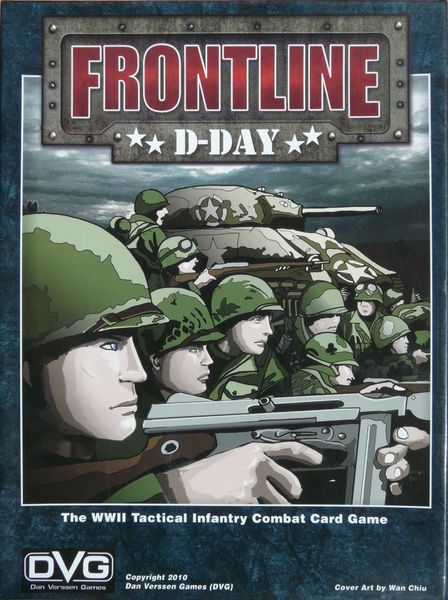Frontline: D-Day (2010) Board Game
Frontline: D-Day is a board game released in 2010, designed by Wan Chiu and published by Dan Verssen Games (DVG). The game falls under the category of card game, wargame, and specifically focuses on World War II simulations. With a runtime of 60 minutes and accommodating 1 to 4 players, Frontline: D-Day aims to provide an immersive gaming experience centered around the events of the D-Day invasion during World War II.
Game Components of Frontline: D-Day
How To Setup Frontline: D-Day
To set up the game, players start by dealing nine terrain cards to represent the battlefield. These can be fixed for a scenario or randomly selected for a custom game. Once the terrain is set, players determine who starts and then receive their soldier cards, which can also be fixed or chosen based on a predetermined VP value. Players then select equipment for their troops and are dealt a hand of action cards.
Gameplay Mechanics and Game Objective
Player Experience
**Frontline: D-Day** offers a dynamic and strategic experience with a strong focus on tactical combat. The game’s abstract mechanics manage to capture the essence of WWII combat tactics, such as find-fix-flank-finish, through its action-reaction system and the use of flanking cards. Players must balance their actions carefully, deciding between optimal uses of their cards and default actions, which adds a layer of strategy and flexibility.
Pros
Cons
Personal Thoughts on Frontline: D-Day
**Frontline: D-Day** is ideal for fans of tactical wargames and those interested in WWII history. It offers a unique blend of strategy and historical accuracy, making it appealing to both casual and experienced gamers. The game’s ability to support solo play and its quick gameplay make it a great addition to any wargaming collection. However, it may not be the best fit for those looking for a highly detailed simulation of battlefield tactics due to its abstract nature.
We are supported by our audience. When you purchase through links on our site, we may earn an affiliate commission, at no extra cost for you. Learn more.

